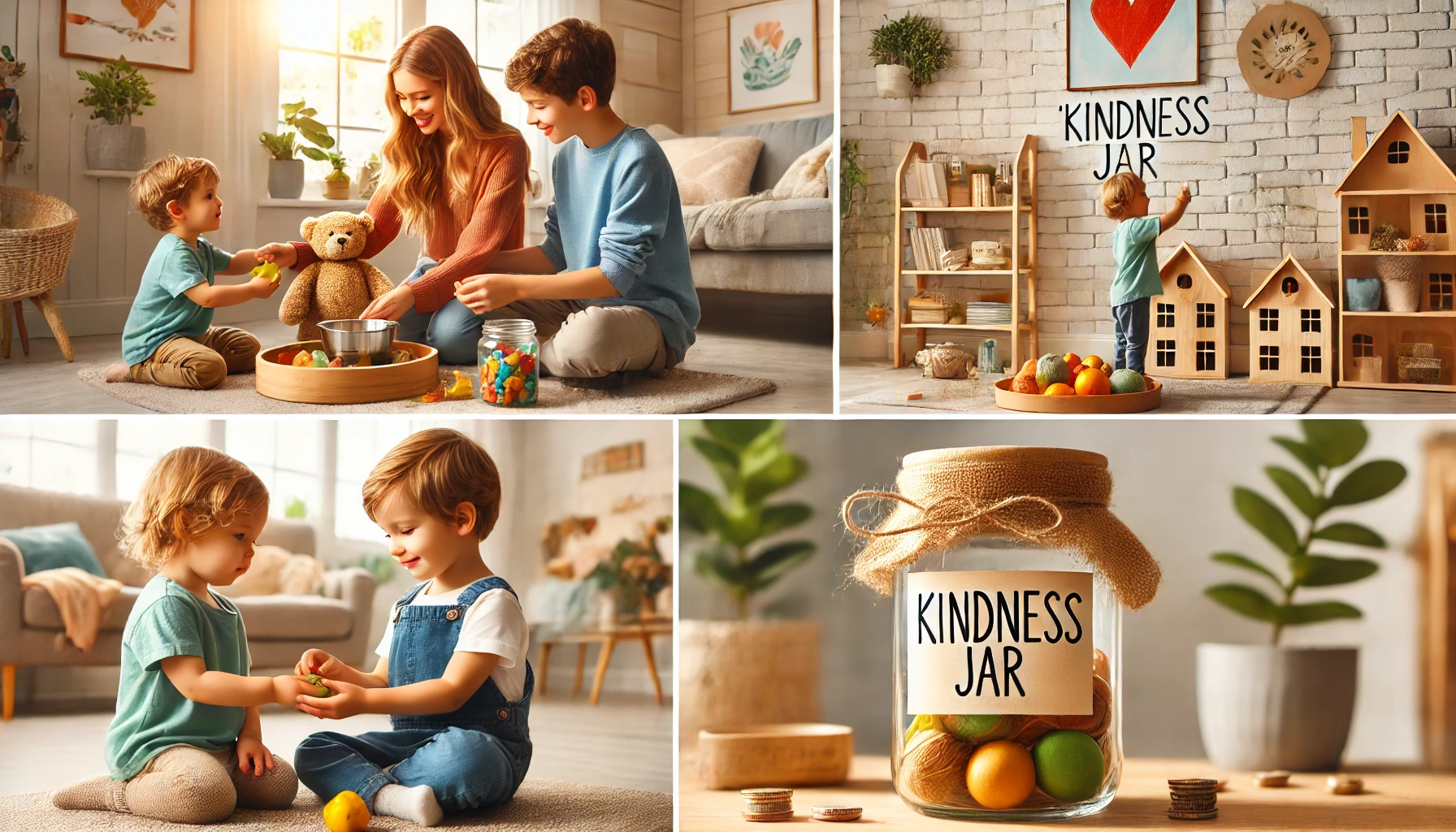How to Teach Young Children About Generosity at Home
Generosity is a valuable trait that helps children develop kindness, empathy, and a sense of community. Teaching young children to share, give, and help others builds positive relationships and fosters a lifelong habit of generosity. Parents can encourage generosity through role-modeling, storytelling, and everyday actions. In this article, we’ll explore practical ways to teach generosity at home.
Why Teaching Generosity is Important
- Encourages kindness and empathy – Helps children think about others’ needs.
- Strengthens friendships and social skills – Promotes sharing and cooperation.
- Develops gratitude and appreciation – Helps children value what they have.
- Builds a sense of community – Encourages children to contribute to the well-being of others.
- Fosters long-term happiness – Studies show that giving to others increases overall well-being.
1. Model Generosity in Everyday Life
Children learn generosity by observing the behavior of adults around them.
Activity Idea:
- Share food, toys, or personal items and say, “It feels good to share!”
- Donate unused clothes or toys together and explain how it helps others.
- Show kindness in small ways, like holding the door open for someone.
What Kids Learn:
- How to give and share with kindness
- The importance of helping others
- The joy that comes from generosity
2. Encourage Sharing Through Play
Playing together helps children practice generosity in a fun and natural way.
Activity Idea:
- Use toys that encourage sharing, like building blocks or puzzles.
- Praise children when they share: “That was so kind of you to let your friend play with your toy.”
- Play turn-taking games to teach the value of fairness.
What Kids Learn:
- The benefits of sharing and cooperation
- How generosity strengthens friendships
- Patience and turn-taking skills
3. Read Books About Generosity
Stories help children understand the value of giving and kindness.
Activity Idea:
- Read books like The Giving Tree or Have You Filled a Bucket Today?
- After reading, ask, “How did the character feel when they shared?”
- Discuss ways they can show generosity in real life.
What Kids Learn:
- The emotional rewards of being generous
- How giving impacts others positively
- The importance of kindness in daily life
4. Teach the Joy of Giving, Not Just Receiving
Helping children experience the joy of giving builds a habit of generosity.
Activity Idea:
- Let them help choose a gift for a sibling or friend.
- Encourage them to make a handmade card or craft for a loved one.
- Have them participate in a “giving day” where they do something kind for others.
What Kids Learn:
- That giving can be just as rewarding as receiving
- How to find joy in making others happy
- The importance of thoughtful giving
5. Volunteer as a Family
Helping others together reinforces the value of generosity.
Activity Idea:
- Participate in a local food drive or community clean-up.
- Bake cookies for a neighbor or make holiday cards for a nursing home.
- Encourage simple acts of kindness, like helping a friend or comforting someone.
What Kids Learn:
- The impact of generosity on a community
- How helping others can be a fun and rewarding experience
- The importance of giving time, not just material things
6. Create a “Kindness Jar”
A kindness jar encourages children to notice and appreciate acts of generosity.
Activity Idea:
- Whenever a child does something generous, write it on a slip of paper and add it to the jar.
- Read the notes together at the end of the week to celebrate kind actions.
- Encourage them to think of new ways to be generous.
What Kids Learn:
- How small acts of generosity add up over time
- The value of reflecting on kindness
- That generosity can be simple and meaningful
7. Encourage Generosity with Words and Actions
Generosity isn’t just about giving things—it also includes kind words and actions.
Activity Idea:
- Teach children to give compliments: “That was a great drawing!”
- Encourage them to comfort a friend who is sad.
- Remind them that saying “thank you” is also a way of giving back.
What Kids Learn:
- The power of kind words and gestures
- How generosity can go beyond material things
- Emotional intelligence and compassion
8. Be Patient and Celebrate Generosity
Generosity is a learned behavior that takes time and reinforcement.
Activity Idea:
- Praise even small acts of kindness: “I love how you shared your snack!”
- Create a reward system for acts of generosity, like earning a kindness badge.
- Celebrate their progress by discussing how their generosity has helped others.
What Kids Learn:
- That generosity is a valued trait
- How giving can bring happiness to themselves and others
- The importance of being kind without expecting something in return
Final Thoughts
Teaching generosity to young children helps them develop kindness, empathy, and a giving spirit. By modeling generosity, encouraging sharing, and creating opportunities for giving, parents can help children understand the joy of helping others and build lifelong habits of kindness.
